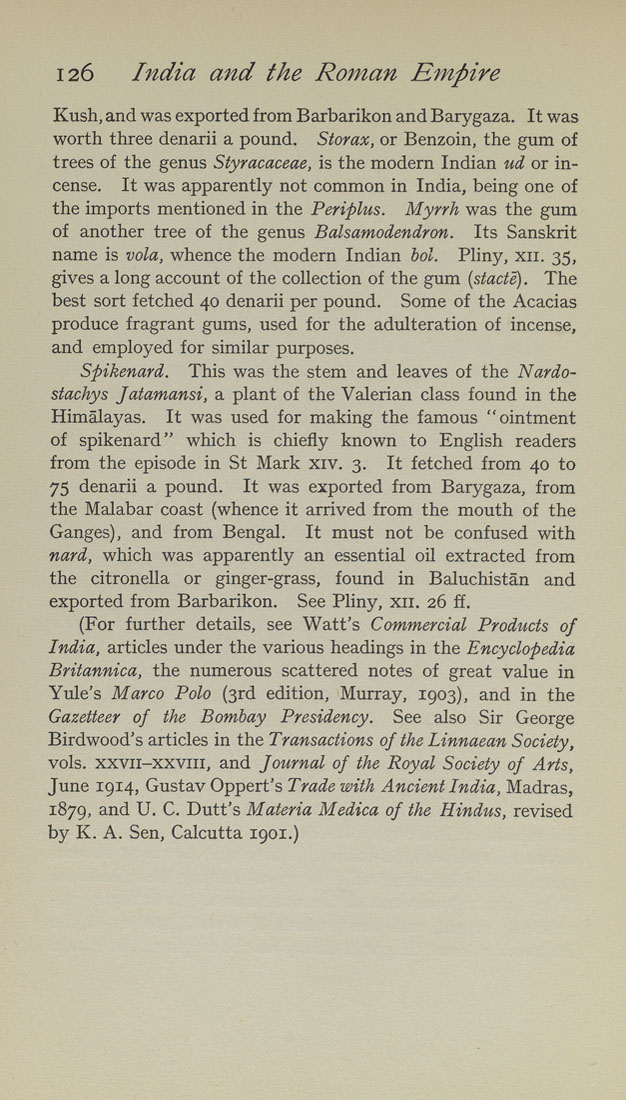126 India and the Roman Em^pire
Kush, and was exported from Barbarikon and Barygaza. It was
worth three denarii a pound. Storax, or Benzoin, the gum of
trees of the genus Styracaceae, is the modern Indian ud or in¬
cense. It was apparently not common in India, being one of
the imports mentioned in the Periplus. Myrrh was the gum
of another tree of the genus Balsamodendron. Its Sanskrit
name is vola, whence the modern Indian bol. Pliny, xii. 35,
gives a long account of the collection of the gum {stacte). The
best sort fetched 40 denarii per pound. Some of the Acacias
produce fragrant gums, used for the adulteration of incense,
and employed for similar purposes.
Spikenard. This was the stem and leaves of the Nardo-
stachys Jatamansi, a plant of the Valerian class found in the
Himalayas. It was used for making the famous "ointment
of spikenard" which is chiefly known to English readers
from the episode in St Mark xiv. 3. It fetched from 40 to
75 denarii a pound. It was exported from Barygaza, from
the Malabar coast (whence it arrived from the mouth of the
Ganges), and from Bengal. It must not be confused with
nard, which was apparently an essential oil extracted from
the citronella or ginger-grass, found in Baluchistan and
exported from Barbarikon. See Pliny, xii. 26 ff.
(For further details, see Watt's Commercial Products of
India, articles under the various headings in the Encyclopedia
Britannica, the numerous scattered notes of great value in
Yule's Marco Polo (3rd edition, Murray, 1903), and in the
Gazetteer of the Bombay Presidency. See also Sir George
Birdwood's articles in the Transactions of the Linnaean Society,
vols, xxvii-xxviii, and Journal of the Royal Society of Arts,
June 1914, Gustav Oppert's Trade with Ancient India, Madras,
1879, and U. C. Dutt's Materia Medica of the Hindus, revised
by K. A. Sen, Calcutta 1901.)
|








